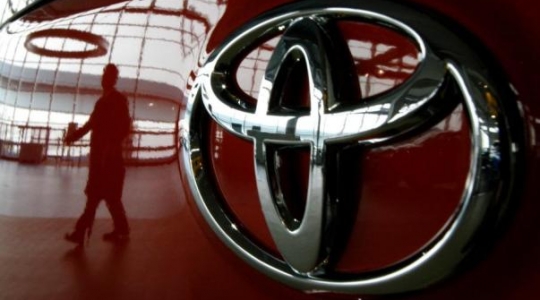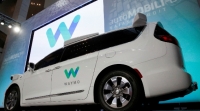
Non, the children’s doodle of a flying car pictured here isn’t a joke. This is an actual Toyota patent filing for a “stackable wing for an aerocar” that was just recently published by the U.S. Patent Office and reported by Automotive News. That horizontal line with the diagonal squiggles underneath it? That’s the ground. The wheels attached to that baleen Prius-shaped thing with a dorsal fin? Yeah, those are not touching the ground. Ora possiamo dirigere la vostra attenzione alla serie di ali che sembrano essere montato su un palo alto che sporge dal tetto del veicolo; questo apparato ala impilabile costituisce la carne reale del deposito del brevetto di Toyota.

To read the patent filing, which was jointly submitted by Toyota and two inventors, is to be fed the assumption that “aerocars” are a mature technology in search of improvements. questioni banali come fonti di propulsione sono spazzolati via, Toyota offering that thrust could be sourced from things “such as a pusher propeller, open rotor, turbofan, or other thrust generation system in flight mode.” You know, plane stuff. It appears that Toyota is merely hedging against future use of a similar stacked-wing design with various power sources, both for in-flight and on the road.
So reconfigure your brains and just assume flying cars are a thing, okay? Affrontare le preoccupazioni Aerocar sia pratico e vana, Toyota sostiene il suo design innovativo ala "da vicino stowable", which can collapse into a vaguely car-top carrier–sized volume, “does not interfere with the side and aft view for the driver” when in its “roadable mode.” As for the overall package’s compactness, che "facilita, per esempio, un profilo basso ed elegante design del corpo potenziale. "Guidare lungo la strada in auto volante è molto più facile quando le ali non si sta creando punti ciechi e crampi tuo stile. E 'potente premuroso di Toyota a pensare di ipotetici Aerocar compratori vanità e un po' sorprendente, given the look of the nuova Prius and the Mirai hydrogen-fuel-cell car.

Intriguingly, Toyota’s patent lacks much clarity surrounding the width of the aerocar’s stackable wing sections—and herein lies the patent’s true focus. Assuming the sections are relatively narrow, perhaps as narrow as the car itself (remember, roadable mode visibility is a priority), vi è quindi la necessità di molteplici profili impilati uno sopra l'altro. If you can’t get the necessary wing area (and by the same token, the necessary lift) by stretching out, stretch up! Oltre a distribuire dalla sua "modalità roadable stivato,” the wings can assume various positions for takeoff, landing, and cruising. While the highest wing features a fixed section, le ali inferiori incorporano attuatori interni a variare la loro sezione (see Fig. 5 and Fig. 6, immediately above); this not only alters the wing’s production of lift, ma consente anche l'ala a ridursi di spessore per lo stivaggio, una capacità critica quando più le ali devono essere impilati.
We highly doubt Toyota is actively working on a flying car, and most likely this patent is something the company filed, again, to hedge against future, um, innovation in this area. More worryingly, at least from our perspective, is that Toyota was investing time on this baloney while we continue to wait for the fruits of more enticing efforts, come, dire, the automaker’s perpetually just-around-the-corner sports car essere sviluppato in collaborazione con BMW.
Fonte: caranddriver.com











